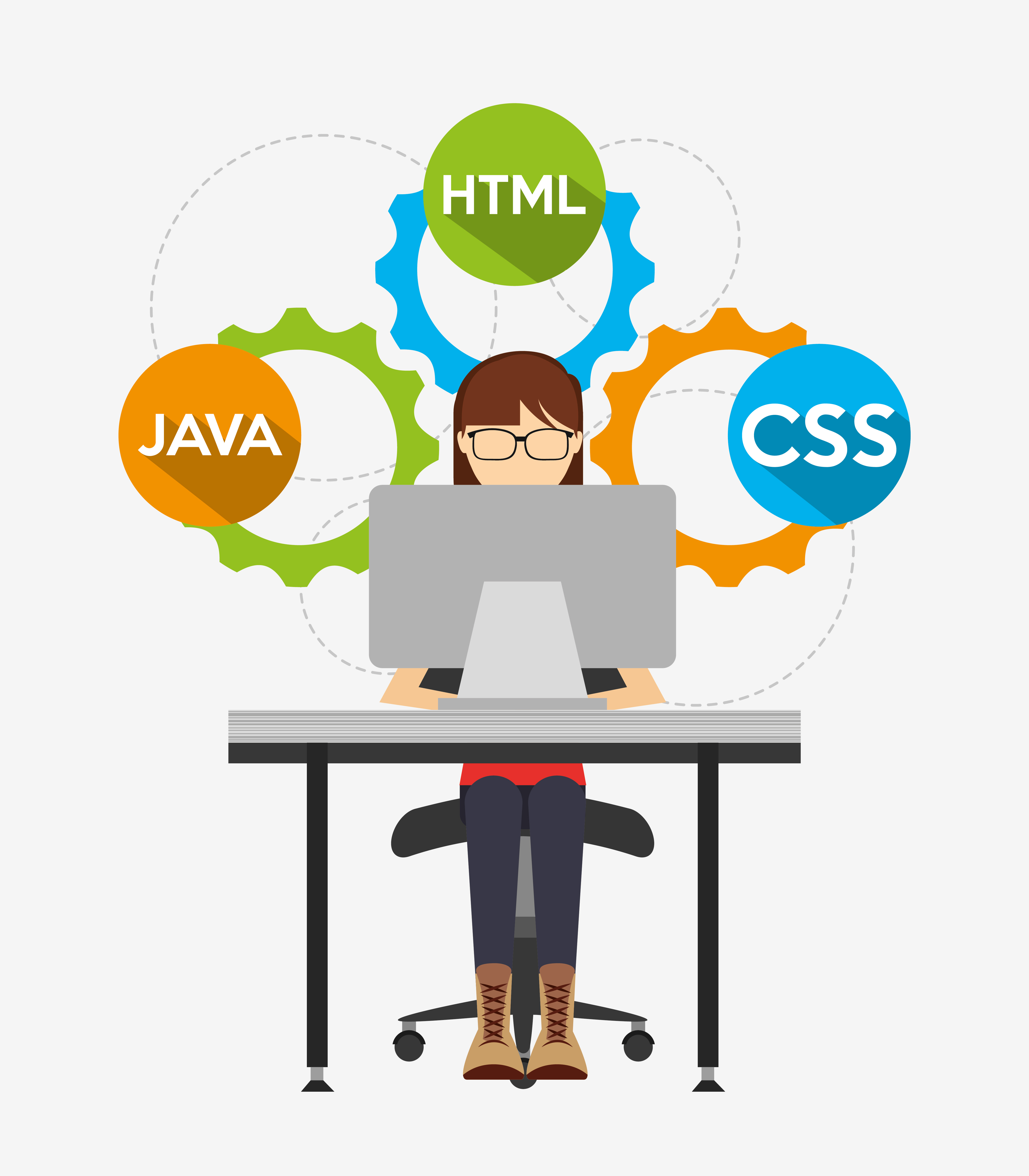How to Create a Website That Balances Speed, Scalability, and Security

Strong 8k brings an ultra-HD IPTV experience to your living room and your pocket.
What are the essentials for online business growth? Speed, scalability, and security. A website optimized for speed will perform better, a scalable website will handle the load without crashing or slowing down, and a secure website will ensure data integrity and security. Together, these three website essentials help improve user engagement, build user confidence, and enable conversions. The end result is a spike in online business growth
But how do you optimize your website for speed, scalability, and security? In this blog, we will explore the techniques that a web development company will adopt to optimize your website performance and make it drive growth.
How to Build a Scalable Website?
Website scalability refers to its ability to absorb any increase in web traffic without compromising performance or increasing time-to-market. A scalable website can anticipate growing business demands and easily manage incremental traffic and data processing.
Benefits of a scalable website
- Consistent website performance
- Speed-to-market
- Conversion optimization
- Future-proof and flexible websites
Horizontal Scaling vs. Vertical Scaling
Websites can be scaled in two ways. When your website development firm adds more servers and distributes the workload among them, this is horizontal scaling. When more power is added to a server by increasing its resources like CPU, RAM, Storage, etc., this is called vertical scaling. You must understand their differences to determine the best scalable approach for your web development.
Differences between horizontal and vertical scaling
Websites can be scaled in two ways. When your website development firm adds more servers and distributes the workload among them, this is horizontal scaling. When more power is added to a server by increasing its resources like CPU, RAM, Storage, etc., this is called vertical scaling. You must understand their differences to determine the best scalable approach for your web development.
Differences between horizontal and vertical scaling
Horizontal scaling increases the redundancy and fault tolerance. Vertical scaling is ideal for handling temporary traffic spikes but lacks alternative backup options. Hence, any system failure renders it useless. You must consider your budget, traffic patterns, and web application architecture to determine which approach best suits your web development project.
Website Scaling Essentials
- Tech Stack: Monolithic vs Microservices
- Content Management Systems
- Scalable Hosting Solutions
- Modular and Responsive web development
- Well-Designed Site Architecture
Best Practices for Website Scaling
- Implement a scalable tech stack with a modular, composable architecture
- Integrate load balancing to distribute all incoming requests and route them through multiple servers or nodes to prevent individual server or node overload and resource underutilization
- Enable caching to allow storage of frequently assessed data on a proxy server or memory to reduce the load on the originating server
- Leverage data sharding to split your database into shards or manageable chunks of data and distribute them across multiple nodes or servers to improve website performance and scalability
- Make use of data replication techniques and create copies of your data to store them on different servers and nodes either as data backup, for load balancing, or to reduce redundancy, improving your resilience, reliability, and accessibility
- Implement the serverless architecture into your web development process so you can outsource your computation and storage to the cloud, improving website efficiency, simplicity, and scalability
- Opt for managed hosting to prevent website crashes and negatively impact UX by placing server management on your host, allowing you to ensure website scalability and reliability
Growth is a priority for every business. You must future-proof your website for long-term growth. Integrate the above best practices to enable scalable web development and meet increasing demands without hampering UX.
Web Development Security Best Practices
Integrating security within your website is a necessity. With technological advancements, cyber threats have also evolved. To counter them, you have to integrate security measures that will proactively:
- Monitor the website to identify loopholes
- Protect your data from breach
- Eliminate the risk of reputational and financial loss
To build a secure website, you must engage with a bespoke web application development firm in New York offering cybersecurity services. Let us now cover a few tips to improve the security of your website.
- Keep your website software up-to-date by installing the latest version update provided by the technology provider
- Regularly conduct website security audits using a website scanner to pinpoint different security issues like spam, malware, server, network, and other vulnerabilities
- Use a web application firewall to monitor all traffic transmitted to your web server and block malicious traffic, hacking attempts, and risk from common vulnerabilities like CSRF, XSS, SQLi, and DDoS attacks
- Update your security plugins regularly so they can future-proof your website by monitoring and addressing its vulnerabilities to prevent hacking attempts and malware
- Use a strong password consisting of numbers, alphabets, and special characters to prevent hackers and cybercriminals from gaining access to them
- Implement two-factor authentication or MFA to secure your website from phishing and brute force attacks
- Keep checking your administrative passwords regularly and allow role-based access for sensitive data to risk unauthorized usage, malicious activities, and data breaches
- Install an additional security layer by installing an SSL certification to encrypt all data transmissions to and from your website
- Ensure your web developers regularly back up your data so that in the event of a breach, you can restore to a previous version, minimizing data loss and downtime
- Always work with a reliable hosting provider so your servers are always backed up, secure, and regularly updated and maintained
In extreme cases, cyberattacks can have severe consequences. Some common outcomes include:
- Loss of sensitive user data
- Website disruptions
- Fines and penalties for failing PCI compliance
- Poor SEO performance
- Damages to business reputation
It is crucial to mitigate security risks. Integrating measures within your web development framework will make the process time-effective and hassle-free. Further, implementing security from the initial stages will strengthen your website foundation, greatly improving its resilience.
Optimizing Your Website For Speed
Website speed significantly influences its performance and user experience. It also plays a crucial role in improving SEO rankings. Slow-loading websites can frustrate users, reducing user engagement and increasing bounce rates. Some reasons that can slow down website speed include:
- Bulky themes and Plugin overload
- Unoptimized images and disorganized databases
- Lack of caching and subpar hosting
- Excessive HTTP requests
- Absence of a Content Delivery Network(CDN)
- Poor optimization of CSS and JavaScript files
- Multiple external scripts
Why must a web development firm optimize your website for speed
- Improved user experience
- Enable responsiveness and mobile-friendliness
- Better SEO rankings
- Smooth performance of complex websites
- Compliance with future technologies like 5G and Edge Computing
- Sustainability and scalability
- Better conversion rate optimization
- Gaining a competitive edge
Best Practices Of Increasing Website Speed
To optimize your website speed, your website performance development company must follow the following best practices.
- Optimize image size to reduce file size without sacrificing image quality
- Pre-compress images before uploading using compression tools to shrink image size, improving loading speed further
- Avoid direct hosting of large media files or embed audio and video files directly from video hosting platforms like YouTube to enhance website performance and conserve bandwidth
- Limit HTTP requests by combining and minifying HTTP requests and reducing the number of webpage elements to accelerate page loads
- Select lightweight speed-optimized themes that are well-coded and do not have unnecessary features and scripts
- Implement a CDN to distribute content on servers situated across the globe, resulting in reduced page loading times irrespective of the location of the user
- Enable caching and implement lazy loading to reduce initial load times
- Clean up old databases by removing redundant and unnecessary data, spam, and old revisions to enhance site speed
- Invest in fast, reliable, quality hosting by upgrading to managed hosting for improved performance
- Limit plugin usage, streamline your website homepage, disable trackbacks and pingbacks and reduce the usage of external scripts
- Conduct regular speed audits to identify areas of improvement to ensure the optimal running of your website
Website speed plays a critical role in improving user experience and conversions. Hence, you must optimize your website development for speed.
Conclusion
Modern website development prioritizes speed, scalability, and security because they significantly impact website performance and user experience. Further, optimizing your website for these three factors will also improve your SEO ranking and increase your visibility. Creating a well-optimized website will ensure long-term benefits. It will help you gain relevance in a competitive landscape and stay relevant for a long time.
Note: IndiBlogHub features both user-submitted and editorial content. We do not verify third-party contributions. Read our Disclaimer and Privacy Policyfor details.







